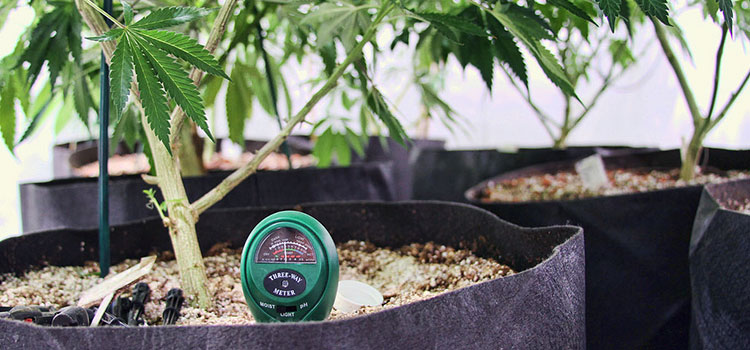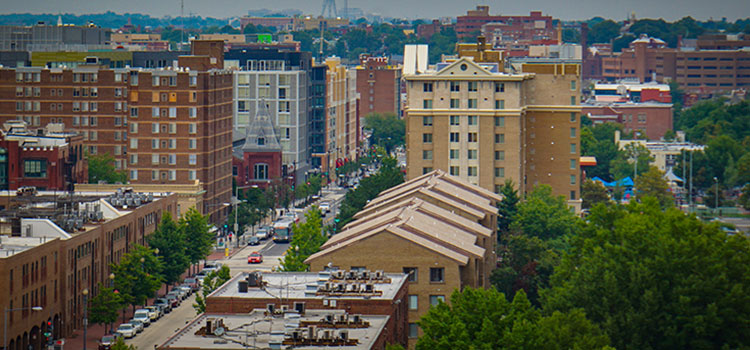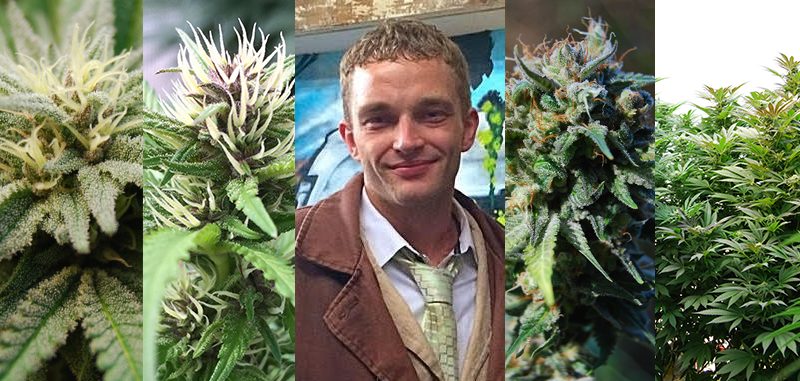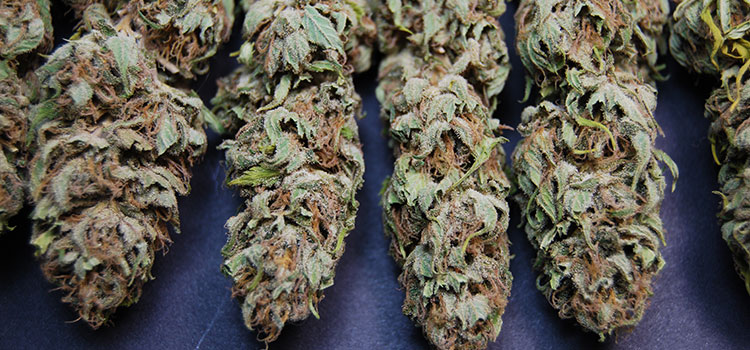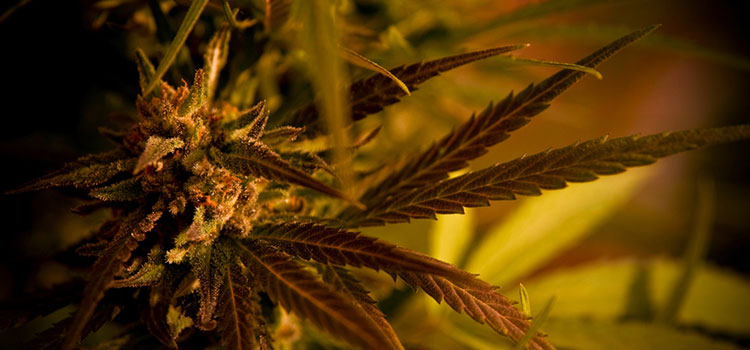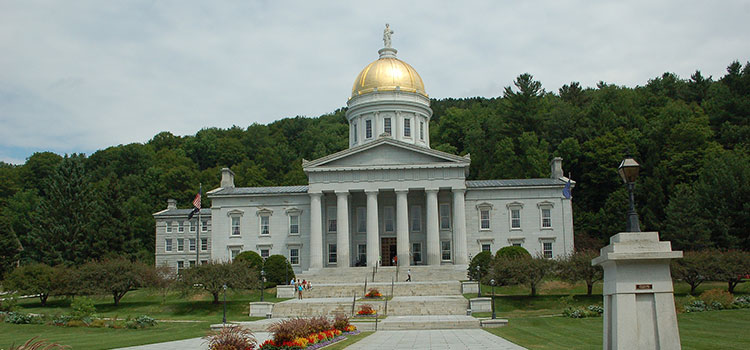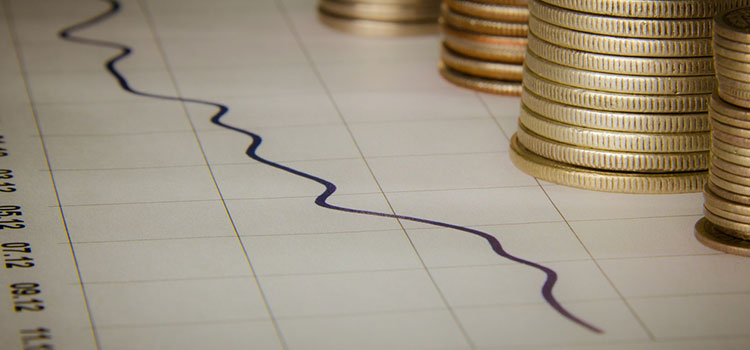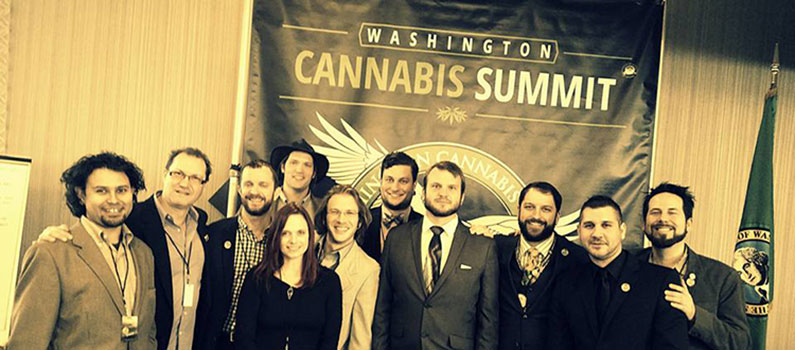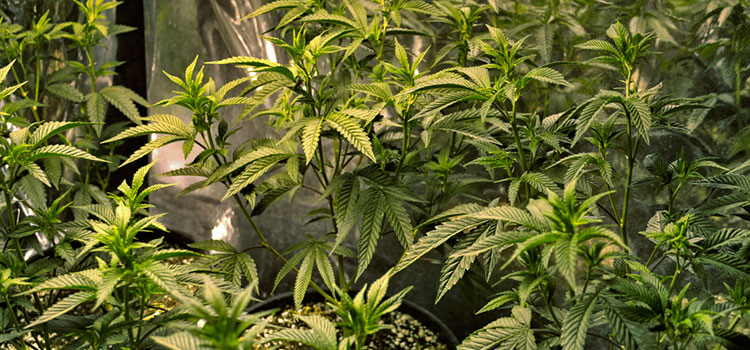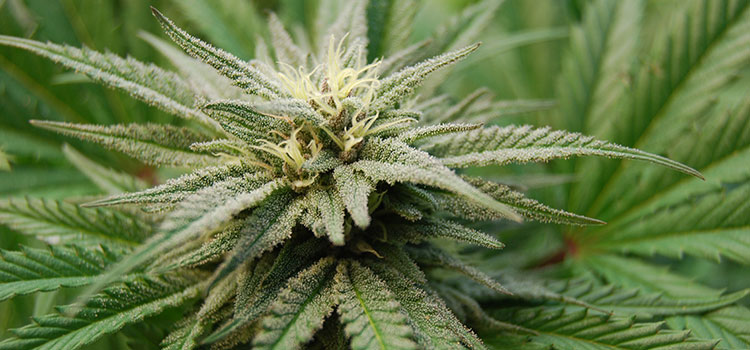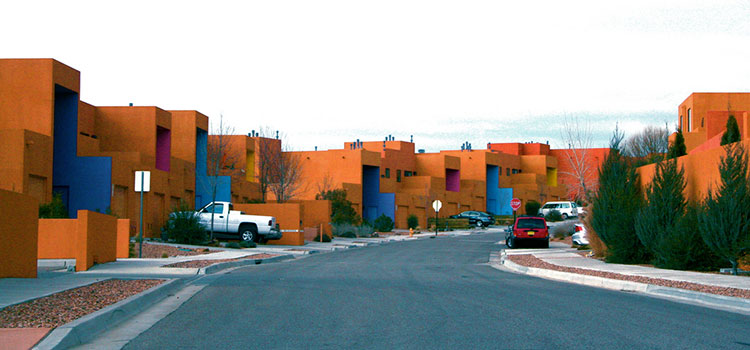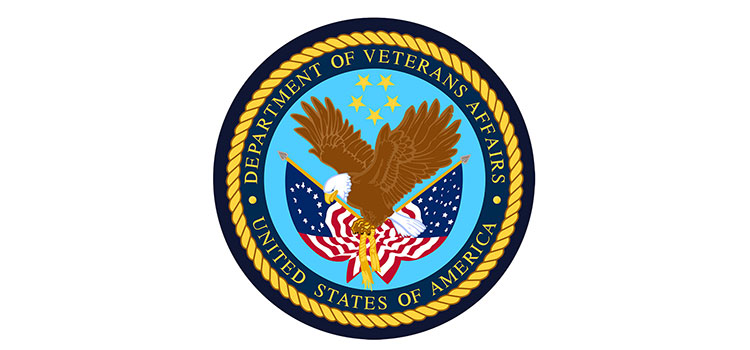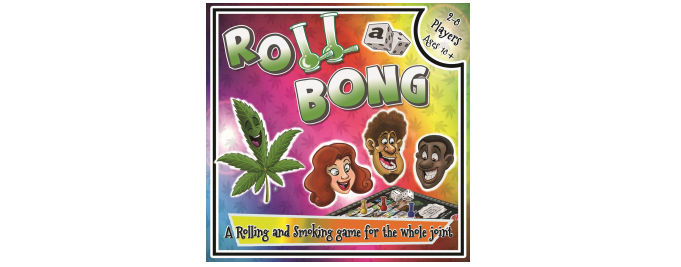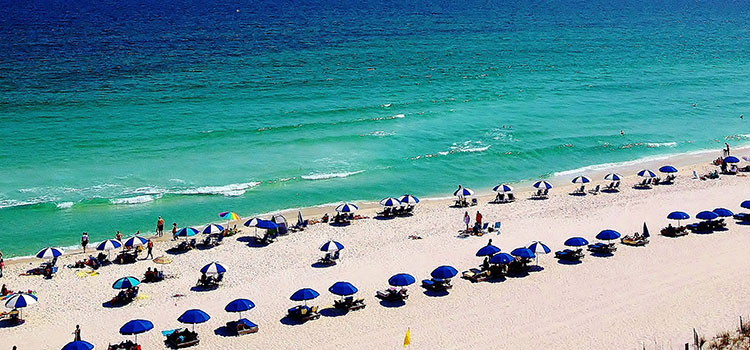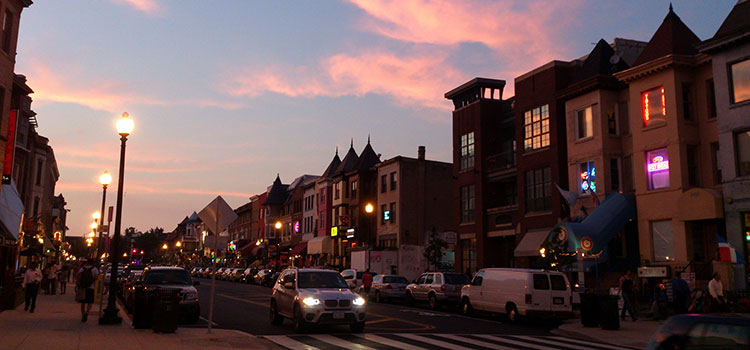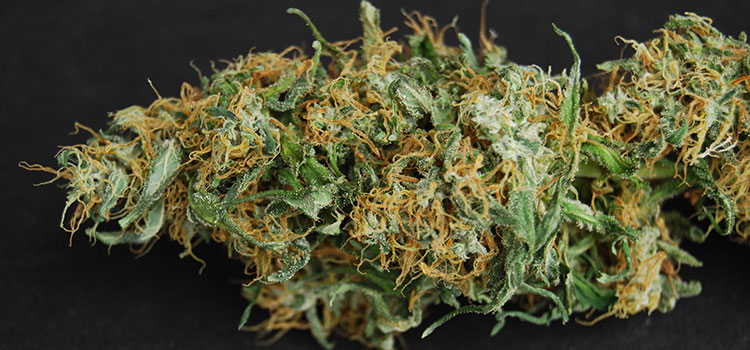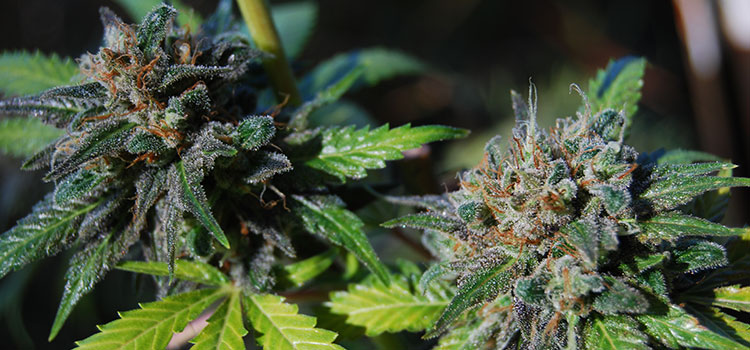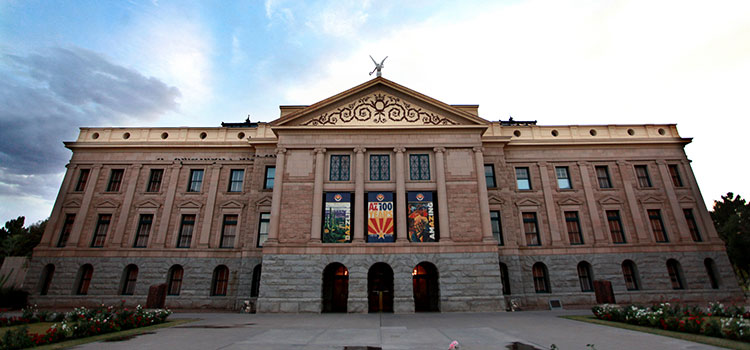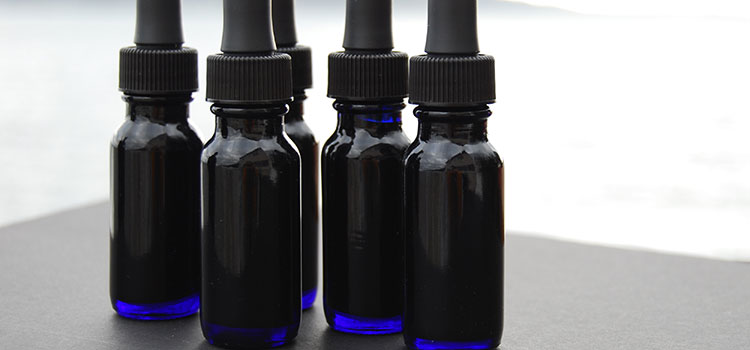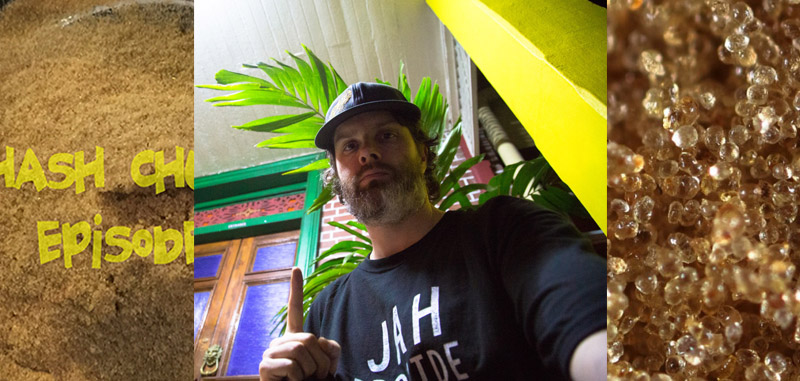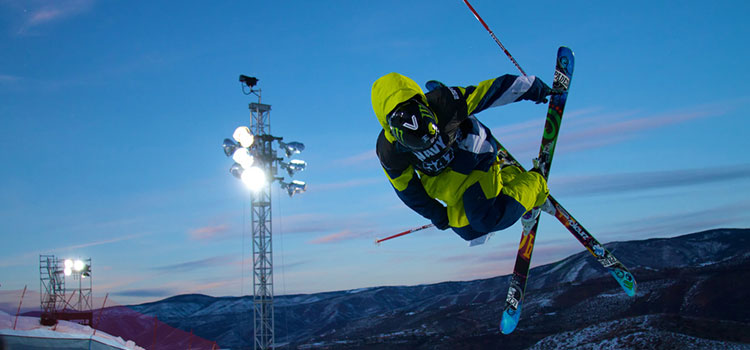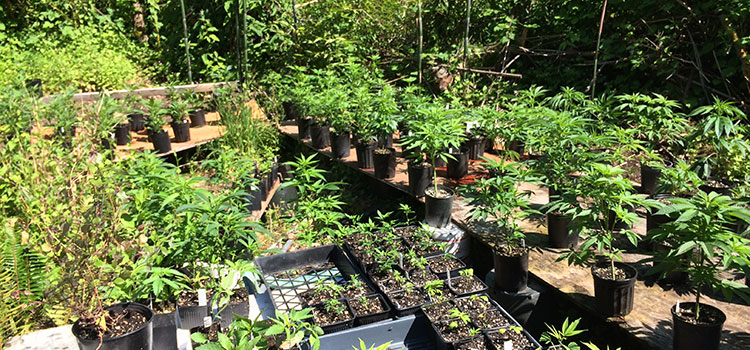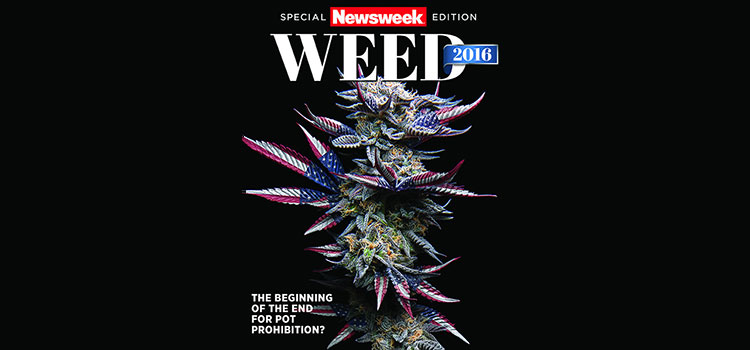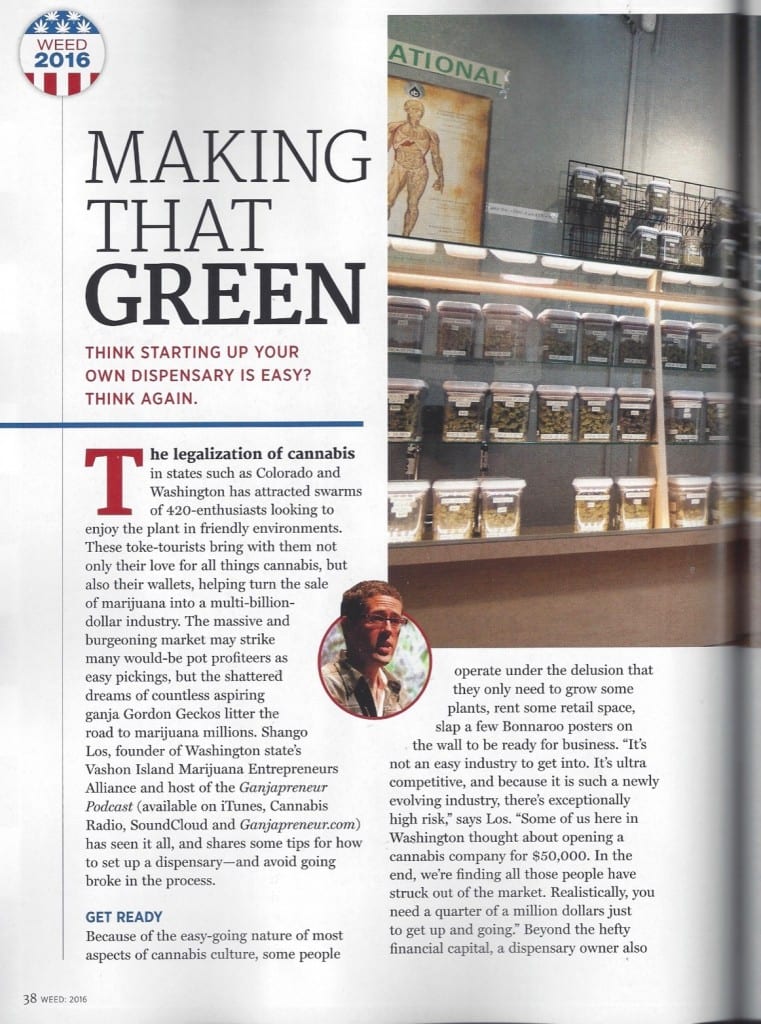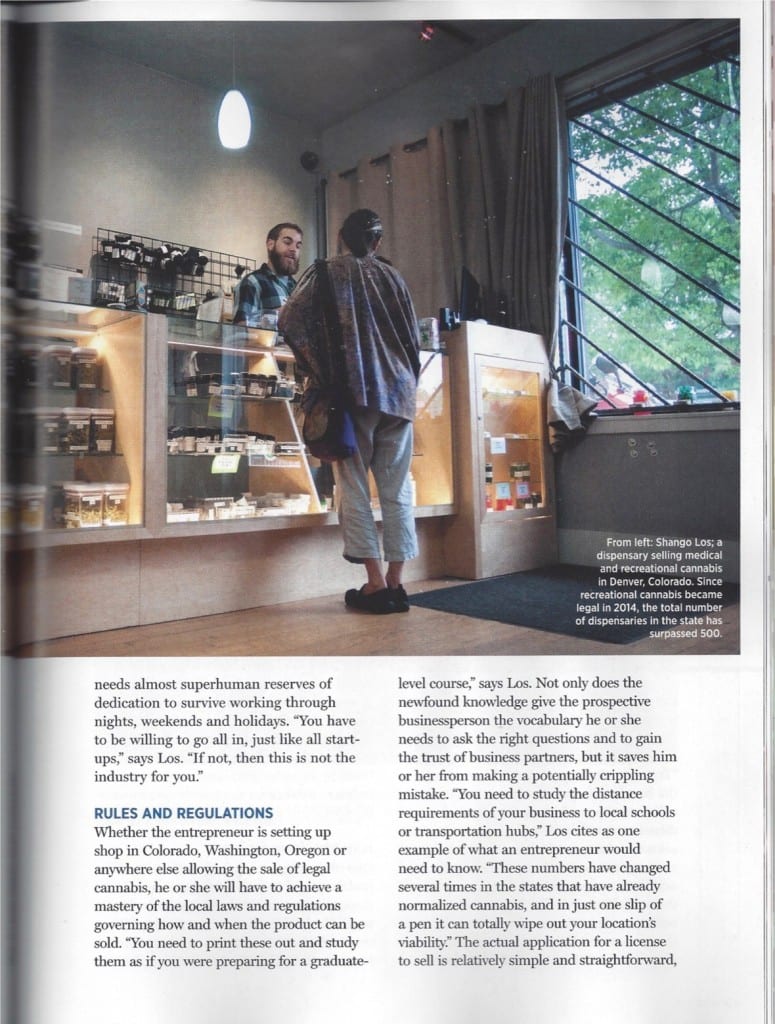Mike West is an advocate, researcher, and entrepreneur in the world of cannabis and hemp. Currently he serves as the director of manufacturing at Cresco, a cannabis production and processing company in Illinois that holds three of the states 21 cannabis licenses. Mike recently joined our host Shango Los for a discussion about hemp-derived CBD, which has appeared on the market in many forms and has been promoted by legitimate cannabis production companies as well as spammy, affiliate-driven marketing firms. In particular, hemp-derived CBD has been promoted as a means for delivering some of the benefits of medical cannabis to patients in states and regions where the plant is illegal. In this interview, Mike talks about the science, policy, and business of hemp-derived CBD, and shares his experience on a variety of other subjects as well.
Listen to the podcast below or scroll down for the full transcript!
Subscribe to the Ganjapreneur podcast on iTunes, Stitcher, SoundCloud or Google Play.
Listen to the podcast
Read the transcript
Shango Los: Hi there. Welcome to the Ganjapreneur.com podcast. I’m your host, Shango Los. The Ganjapreneur.com podcast gives us an opportunity to speak directly to entrepreneurs, cannabis growers, product developers and cannabis medicine researchers all focused on making the most of cannabis normalization. As your host, I do my best to bring you original cannabis industry ideas that will ignite your own entrepreneurial spark, and give you actual information to improve your business strategy, and improve your health and the health of cannabis patients everywhere.
Today my guest is Mike West. Mike West is a researcher and entrepreneur in both cannabis and industrial hemp. Since 2006 he has performed legislative advocacy, business development and cannabis research in Colorado, Washington, Oregon and other states. Mike studied molecular biochemistry, earning further certificates in renewable energy and sustainable building, and received a degree in international and environment law at CU-Boulder. In 2009 he began business consulting while still a student, and then partnered with the Milavitz Law Firm in Boulder, Colorado, to advise cannabis business startups. Since 2010 he has successfully designed and implemented and managed commercial cannabis dispensary operations for investor groups, and has helped open some ten medical marijuana retail centers, over forty medical cooperative cannabis farms, and three infused process manufacturers.
Since moving to Washington State in 2011, he has continued to advise widely in medical cannabis and has recently completed advising on the manufacturing expansion of General Biodiesel, a waste oil to biodiesel processing company in Seattle. Since March he has been advisor to Senator Positive Nelson of the U.S. Virgin Islands. Michael has recently moved from Washington to Illinois where he is currently serving as the director of manufacturing at Cresco, a cannabis production and processing company that holds three of the state’s twenty-one cannabis licenses. Welcome Mike West.
Mike West: Hi Shango. How’s your day going?
Shango Los: Everything is great. I’m really glad you could be on the show. Everyone is talking about hemp-derived CBD right now. We’ve seen it sold through legitimate players like Mary’s Nutritionals, and we’ve seen it also sold on Amazon.com, which was surprising, but we’ve also seen it pushed via email spam. What exactly is CBD derived from hemp?
Mike West: When you look at the essential oil components that are in hemp and cannabis, there’s a couple different primary classes. There’s the terpenoids, which are identified as essentially the smells and the flavors associated with the cannabis strains. Those terpenoids are found in a bunch of different flower species. Cannabis is unique in the fact that the cannabis species has phytocannabinoids. Phytocannabinoids are a class of terpenoids which act as neuroregulators within the body’s neurological system.
Most notably of the phytocannabinoids is THC. That’s the phytocannabinoid responsible for the psychedelic high associated with cannabis, but, since THC was discovered in the late ’70s by Raphael Mechoulam, there’s been a lot of research into the other phytocannabinoids identified in cannabis and industrial hemp. More recently over the past five years, they’ve actually identified a phytocannabinoid by the name of cannabidiol, CBD for short, which they’ve identified to play a important neuroregulatory role in the CB2 receptors, which are the neuroregulatory receptors that work in the peripheral nervous system. Whereas THC has a psychoactive role in the brain, CBD actually plays a role of regulating neural firing in the neurons in your peripheral nervous system like your stomach, in your arms, legs, and in your muscles.
Shango Los: Up until now we’ve talked on this show a lot about CBD being derived from whole plant cannabis, but today we’re talking about it coming from industrial hemp. What are the differences between CBD that’s coming from whole-plant cannabis and the kind of stuff that you’re talking about getting from industrial hemp?
Mike West: Obviously there’s been multiple decades of research done for the extraction of essential oils and phytocannabinoids out of cannabis. Cannabis is a widely biodiverse species, but when the International Singles Treaty was written, they actually created a classification that separated industrial hemp from cannabis. They separated the industrial hemp from what we now know as marijuana or medical marijuana or cannabis, by creating a distinction of the amount of psychoactivity found within the plants. On a international treaty level, that’s about one percent. A lot of the US states have passed laws saying that if it’s below point three percent THC, it would be considered industrial hemp. That’s caused a lot of people to start selecting for phenotypes that are non-psychoactive and more recently start selecting for phenotypes that are non-psychoactive and lack the THC, but also contain other potentially medicinal phytocannabinoids like CBD.
Shango Los: When CBD is being taken from industrial hemp, are we still getting a whole-plant medicine, like we think of the entourage effect when we’re talking about medical marijuana?
Mike West: There is some entourage that is associated. That’s actually one of the things that I’m sure we’ll talk later about, but one of the great things that’s lacking in the CBD hemp market. When we look at medical marijuana, a lot of patients want to see how much THC is in the medical marijuana, but they also want to know what are the terpenes, what are the flavors, because each of those ancillary essential oils plays a very beneficial role, what we call the entourage or ensemble effect, in actually either increasing or decreasing the neural firing. Whereas the phytocannabinoids actually play a role doing neural regulation of neurons, the terpenoids and other essential oils actually play a role in either slowing down or speeding up or actually triggering neural pathways.
When we look at CBD isolation, it’s looking at isolating the individual compound of CBD. Now when many companies started taking industrial hemp and processing it, they would take the agricultural byproducts of industrial hemp that was being grown for fiber. They’d take the byproducts, extract the essential oils out of them, but only primarily look at isolating the CBD. More recently there’s been numerous companies that have started looking at, okay, let’s extract all of the essential oils, make sure that it’s below the legal limit of THC but try and contain all of the terpenoids, essential oils, etc., so that we can create that full-plant profile which is going to have a lot of synergistic effects.
Shango Los: That’s really interesting. That’s the first time I’ve heard of that. Usually when I’m hearing about CBD derived from hemp, the CBD has been isolated, and that’s the only thing that is coming out. All the terpenes and any other loose cannabinoids are being left behind. People have been usually comparing it with Marinol where they pulled out THC only, and didn’t use any of the other cannabinoids or terpenes, and had terrible experience with the pharmaceutical Marinol. But what I think I’m hearing you say is that, yeah, in the past they’ve only taken out CBD by itself, but they’re realizing that the terpenes are part of the overall medicine and starting to take those out as well, which sounds like a win to me. How do the terpenes that are found in industrial hemp compare to the terpenes that are found in what we think of as medical marijuana?
Mike West: When you look at it going through and creating medical cannabis drugs whether they be isolated from industrial hemp or cannabis, we have to be able to create, as a industry, multiple different classifications on the nutraceuticals or pharmaceuticals that we create. The international regulation put in place in order to call something a pharmaceutical drug is much more stringent than drugs that are either considered homeopathic medicines or nutraceuticals. So with the case of Marinol … GW Pharma actually has recently released a drug called Epidiolex. Epidiolex is a isolated CBD-only in a milligram-dosed form. A lot of doctors that we talk to, especially traditional doctors that work in the pharmaceutical industry, they have a lot of concerns about the variation in the amounts of compounds in the medical cannabis products, so a lot of traditional doctors are going to prefer the milligram-dose amounts of CBD.
More recently we’ve started looking at, okay, there’s more to cannabis than just the THC. Let’s start incorporating some of these terpenoids. So, too, we’re actually looking at within the medical hemp varieties, is there more to the medical hemp varieties than just this CBD? And there is. If you take a high CBD plant that has some lemonine in it versus a high CBD plant that has myrcene in it, the essential oils that are going to come out are going to be still high CBD with low THC, but it’s going to have different terpenoids which contribute to the different flavors as well as different neurological effects from those terpenoids. When we actually start classifying pharmaceuticals, it’s going to have to be … every constitute component is going to have to be milligram dosed, but nutraceuticals are just going to be ratioed and homeopathic drugs are just going to be isolates.
Shango Los: What I’m hearing is that the advanced folks who have been working with CBD from hemp, they’re actually realizing that, okay, if we are going to hybridize this plant for CBD, we might as well get some of the terpenes in there as well, because we all know that medical marijuana … the terpenes in that, the citrine, the linalool, the myrcene, the lemonine, all this stuff has a positive effect on the body as well. As they are advancing in deriving CBD from hemp, they’re all like, “Hey, let’s go ahead and get more of the spectrum of healthy cannabinoids, just exclude the THC because in a lot of these states it’s the THC aspect which is prohibited. Am I following you right?
Mike West: Absolutely. What we see in the political-scape … Obviously I have a little bit of family history where some of my family members had epilepsy. In many fairly conservative political jurisdictions, a lot of politicians are very adverse to providing medical cannabis drugs to adolescence minors when the drugs have psychoactivity. So what we’re seeing is a lot of the states in the southeastern portions of the United States are passing CBD laws which allow for the cultivation of medical marijuana but that that medical marijuana has to be a low THC, high CBD variety. That would classify it as a medical hemp variety.
One of the groups that we’re consulting in the Southeast is doing an application where they’re going to be cultivating several acres of CBD hemp, but obviously they want to cultivate more than just one phenotype of, say, Charlotte’s Web. So being able to go in there and say, “Okay, here is a bunch of different phenotypes. Some of them are higher in lemonine, so those are going to be CBD strains that are better for the morning. Whereas this one has high linalool or myrcene so even though it doesn’t have any THC, it’s still going to have some sedative effects from those ancillary entourage terpenoids.
Shango Los: Well, at that point the million dollar question actually, then, becomes we understand that THC is not allowed in many of these jurisdictions, how effective is CBD, and let’s talk less about … Well, let’s talk a little bit about isolated CBD, but it sounds like the market is developing medical hemp. So let’s talk about CBD plus terpenes. How effective is medical hemp-derived CBD when compared to a whole-plant extract of medical marijuana?
Mike West: We’ve done extractions of both medical marijuana and industrial hemp, medical hemp which is high CBD hemp, a lot of it goes down to how it’s processed and what it’s processed into. If you take a really potent THC medical strain and process it unprofessionally, you’re going to end up with really dark goop that’s not really medicinal products. The same is true with medical hemp. If you take a lot of the agricultural byproducts and extract them, then you’re not going to get as high a quality product as the products that are going to be derived from medical hemp varieties that are bred and developed and cultivated for the specific use of extraction of the phytocannabinoids of CBD and terpenoids.
That’s gets into how can we … as farmers we want to be able to maximize the value of our crops, so a lot of the farmers who started by doing … ‘let’s just cultivate industrial hemp,’ and so in the international-scape, a lot of countries like China, Romania, Lithuania, France and Spain cultivated the low THC strains of industrial hemp. The International Singles Treaty required that they breed out all the THC from them, so they had to select for different phytocannabinoids. One of the ones that was selected for was CBD. So they started selecting for getting rid of the THC, bringing the CBD, but those hemp varieties still had terpenoids in them.
When the industry developed where they actually started saying, “Hey, these CBD plants might actually have more value than the fiber we’re harvesting off the hemp plants, then we started seeing the industry develop into what we call a dual crop or a tri crop, where people would actually cultivate the industrial hemp, harvest the flowers for the seeds and the flowers, and then extract the what we call the shaft, which is the brackets around the seeds, extract the CBD out of the byproduct flower, used the seeds and then use the stems. They actually started developing farming methodologies where they would not only isolate the CBD from the flowers but also be able to use the stems and in some cases the seeds as well.
Shango Los: What we’ve got here in the end product is an isolated CBD in conjunction with selected for terpenes but no THC. Let’s talk about how this affects the patient. I would think that folks with seizure, folks with epilepsy, folk whose malady is based on a misfiring of receptors, they may well get some benefit from this type of a product, but it’s going to be a little bit more distant for folks who need the THC, like Parkinson’s and cancer and things like that. So this is a medical hemp-derived CBD, but it’s not really a solution for everybody. Am I following you?
Mike West: Absolutely, absolutely. Because when you look at the way that everybody’s neurobiochemistry is made up, everybody has a slightly different neurobiochemistry. We’ve even see a lot of cases where … CBD was originally thought of as the wonder drug for epilepsy. What we’ve actually identified is that CBD works phenomenally in about twenty or thirty percent of epilepsy cases. That’s a small percentage of epilepsy. We’re seeing a larger percentage of success in this combination of CBD and THC drugs, because what we’ve found is that CBD helps reduce the occurrence of the epileptic episodes, but the THC actually helps to stop the onset or decrease the onset of the epilepsy.
In other cases where you have muscle inflammation and other muscle soreness, a lot of times that comes from hyperactivity in the neurons, so being able to have the CBD play a neuroregulatory role, down regulating the phytocannabinoids receptors actually can allow for … not so much the reduction in pain but the decrease in the potentiation of the pain. That’s been backed by several different international research studies. Obviously we would love to be able to do the research into creating nutraceuticals and potentially pharmaceutical drugs out of CBD hemp, but unfortunately the US federal government classifies hemp and CBD under the Analog Dug Act as a Schedule I substance just like THC is. The way that we’ve gotten around that is obviously by working with states, with jurisdictions, with government officials to draft laws that allow for us to be able to do this heavily regulated research in a corporate setting, in states that passed the regulation that followed the federal guidelines what we call the eight principles of the Cole and Ogden Memorandums.
Shango Los: It sounds like we’ve got a three-step process. First of all, we know that at the federal level it’s Schedule I, and so technically none of this stuff that we’re doing is legal at the federal level. Then the second step is that some states are allowing CBD-only legislation to pass which then allows these medical versions of hemp to be process into a CBD plus terpenes that gives some relief to patients. Then finally in states that are more far along towards normalization and they can use a full medical marijuana plant, we’re getting full on entourage effects that’s giving folks all of the possible relief that can come from the plant. Well, this is making a lot of sense. Mike, we need to take a short break and be right back. You are listening to the Ganjapreneur.com podcast.
—
Entrepreneurs across the country are establishing businesses in response to cannabis normalization. Once a state becomes legal for cannabis, they all go through similar growing pains. New business owners must develop a business plan, a brand, learn growing and processing techniques, and develop products from those new skills and get them to market. Most challenging, they must learn how to work creatively within the narrow bands of legality set by their state regulators. Each step in this process is filled with hidden delays that burn resources. The most common challenging belief I have seen from my own clients and other players in Washington, Colorado and Oregon is that they think they can do it all themselves, or worse that they have to do all by themselves. This is simply untrue and in most cases will cost you a great deal of time, money and frustration.
We have reached the point now that they are exceptionally good cannabis consultants who have learned from their mistakes, risen to the top of their own markets, and now offer this advice to new cannabis entrepreneurs in states that are just moving into production now. One of these is Green Lion. Green Lion was an early player in the Washington medical market. They grew up during times of confusing, gray market regulations, balancing between honoring the Cole 2 memo in state’s cannabis laws while continually striving to push the market forward with groundbreaking growing, processing and products.
Green Lion was in the first round of licenses awarded by Washington State, and they began the difficult challenge of running tandem medical and state licensed recreational operations while being a shining example of creating revenue and staying within the fine details of state law. Their extraction lab uses a variety of methods and has a reputation for producing exceptional oils and an employee-training program taught by folks who are now industry leaders.
Green Lion can help you attain your own cannabis sales goals. Their multifaceted team has the expertise you need, whether i be growing, extraction, product development, branding, or support working through your state’s licensing process.
Green Lion is also now acquiring established medical and recreational marijuana product lines to bring into the Green Lion family. If you have an established product and want to participate in the licensed cannabis market, Green Lion could be the place for you. They will fold your manufacturing team into their production and get your proven products into the hands of cannabis enthusiasts everywhere.
Finally, do you enjoy fine cannabis oil? Green Lion presently provides recreational and medical products made with their premium oils throughout Washington State. Ask for Green Lion Dab Oil, CO2 oil and kief-infused pre-rolls, vape cartridges, and full plant extract topicals at your favorite retail location.
Get your pen ready because here comes the contact information. If you want to achieve a positive cash flow in a shorter time, reach out to Green Lion. If you have a marijuana business that needs to find a licensed home to manufacturer, reach out to Green Lion. Drop a line to contact@greenlionindustries.com and let them know how you want to work together. Tell them Ganjapreneur sent you, too. That email address is contact@greenlionindustries.com. Now back to the Ganjapreneur.com podcast.
—
Welcome back. You are listening to the Ganjapreneur.com podcast. I’m your host, Shango Los. Our guest this week is Mike West, director of biotechnology at Green Lion Farms. Mike, before the break we had a very detailed discussion about the different kinds of hemp-derived CBD and both its advantages and shortcomings. Well, a lot of the folks who listen to this podcast are not necessarily going to be patients themselves. They are entrepreneurs who are interested in bringing this relief to the patients. Let’s talk a little bit about producing the medical hemp itself. Our country has got lots of different growing areas. Are there particular parts of the country that are going to end up being more effectively growing medical hemp than others?
Mike West: Absolutely. Obviously cannabis and hemp are a weed. It’s been cultivated on, from what I can tell, all seven continents, Antarctica only by humans, but we have found feral hemp that was planted in the ’30s is still to this day being eradicated by the DEA. So there’s hemp cultivars growing wild across the US. The big push is going to be we’re going to see a lot of the conservative states down in the Southeast are going to pass hemp legislation before medical regulation, whereas some of the West Coast states are going to pass medical regulation and potentially recreational regulation before the industrial hemp regulation. What were going to end up seeing is that the market’s eventually going to develop where we have different bioregions that are producing different types of cultivars.
A great example is going to be Canada has developed a lot of early finishing seed cultivars, whereas countries like Spain and France have primarily developed fiber cultivars. It’s a combination of where the industry was invested to as well as transportation and commercial aspects. It’s a lot cheaper to transport rope from hemp fields in Spain to the ports in Spain or France than it would be for Canadian hemp farmers to export their fiber potentially across the world. A lot of times we’ll end up start creating biodiverse geo-locations where one cultivar is going to be developed in one bioregion, other cultivars are developed in other regions.
One of my best suggestion for farmers that are looking at cultivating industrial hemp is when you look at cultivating medical cannabis, you’re looking for high value, highly rich soil, something that grows in a riparian zone along river bottoms, etc. Industrial hemp grows phenomenally along river bottoms, but when we look at cultivation of industrial hemp, we generally look for bioregions that are similar to where we see flax and wheat being cultivated. It’s a slightly drier climate that has less regular annual rainfall and that allows for us to cultivate different hemp cultivars and potentially cultivate fiber as well as the CBD and the seeds.
Shango Los: I would think that all these different cultivars not only … they might be longer or shorter flowering, but they’ll also end up in a final product that’s got a different mix of terpenes profiles. Medical hemp derived in different parts of the country with longer or shorter summers and different nutrition in the ground would probably derive entirely different types of medicine.
Mike West: Absolutely. What we’re actually seeing is it’s a combination environmental factors, so the amount of nutrients that are in the soil are going to change the amount of phytocannabinoids and terpenes produced. The amount of sunlight, we’re seeing further south you’re going to have bluer spectrums, whereas further north you’re going to have redder spectrums. Then the combination of being able to breed in different traits from medical cannabis and medical hemp varieties allows for us to be able to start selecting for a very rich and very biodiverse medical hemp cultivars. Now, a lot of our breeding has to do … okay, we have to go through hundreds of seeds in order to isolate those really unique phenotypes that has that perfect ratios, but that’s a lot of the research that we do within the state’s registered laws.
As the industry gets developed and what we’ve actually seen develop in Canada is a pedigreed seed system, whereas farmers who are in Canada can actually locate pedigreed-tested seed cultivars and those pedigreed-tested seed cultivars have been cultivated for, I believe, six generations, isolated, back-crossed and stabilized so that when farmers in Canada purchase those pedigreed seeds they know that those seeds are going to be tested, not test high. There’s a couple cases where some of the farmers that are getting started in Colorado and other states planted seed varieties that in their country of origin, place of origin, they tested below the international and national drug treaties of three percent. But by moving them from one bioregion to another bioregion and cultivating them in different environments, we’ve seen slight variations in the THC concentrations, which could potentially be very, very costly for the hemp farmers.
Shango Los: Wow. That’s actually really interesting. You take the same seed, and you’re growing it somewhere different, and you’re getting these different effects. It’s like when we are having winter wherever we are and then we go to Hawaii, suddenly we feel like we’re thriving more, too.
Mike West: Absolutely, absolutely. We see that with many different cultivars. The apples that are grown in Washington State are going to look different than the apples grown in California. In many cases we’ll be able to develop different cultivars that bio-locate and evolve as we select for them as we hybridize them to be able to create unique cultivars that are locally adapted to the different bioregions.
Shango Los: Let’s talk acreage for a moment. When talking medical marijuana versus medical hemp, medical marijuana has got a far greater density of all of the healing attributes that we want as part of the entourage effect. It’s got more THC, more CBD, more terpenes, and so you can grow this indoors under lights in a warehouse and if you plan your business right, you can make some good revenue. But hemp, because the density is so much less, except for a little bit of R&D, if even that, that’s not a product that’s probably going to be grown in a warehouse. So we’re talking about fields and fields of this so that it can be processed en mass to get the constituents we want. How many acres are we talking about … here in these early days, do you think is a minimum number of acres to make it worth the while as far as profit and creating revenue out of this goes?
Mike West: What I like to tell the farmers is that every acre of hemp that you plant, you could potentially make two to three times as much as if you were to plant wheat. Looking at it from a commercial standpoint, if we’re going to spend the millions of dollars in order to build a hemp processing plant, we want to be able to run that hemp processing plant at least three hundred days a year, preferably three hundred fifty days a year, twenty-four/seven. When you start looking at that, especially on the fiber side, that requires not only hectacres but thousands of hectacres. Some of the medical groups that we’re working with in Florida are looking at doing up to twenty-five acres of medical hemp, but that’s for a limited use in the medical program. Other groups, notably one in Colorado, are rapidly trying to scale up in the hundreds of hectacres. We’ve even heard of groups in Oregon or abroad that are looking at doing the thousands of hectacres.
The idea goes that is as we get these identified cultivars, we can actually scale up the acreage, and using that scaled up acreage, cultivating a select number of cultivars, we never want to just grow a mono-culture, we want to grow three to five to maybe ten different cultivars of industrial hemp, and using those industrial hemp cultivars, we can actually start selecting for different traits in them. What we’re going to see is that the medical hemp is going to very much be able to fuel the growth in the industrial hemp sector. When you look at the derivatives that the … essential oils that can be extracted out of medical hemp, it’s far and away greater value than, say, just cultivating wheat. In order to use more than just the extracted oils, we need many thousands of acres to be able to justify the millions of dollars of investment required to build out these large-scale industrial hemp processing plants like we’re seeing in Europe and in Asia.
Shango Los: The idea of hectacres of medical hemp probably has our medical marijuana growers all giving up red flags. We might as well talk about the obvious question, a lot people are concerned that having industrial medical hemp growing in the same areas as medical marijuana is going to cause a cross-pollination and ruin both crops. I’ve heard everything from the crops need to be at least three miles apart to being ten miles apart and even more. What does the science say behind this if we set all the fear mongering aside?
Mike West: The science has been studied a lot both in Canada as well as in Spain. There’s a great example where in Spain they actually give a pollen report for the amount of pollen that’s being blown from Morocco into Spain. Now that oftentimes scares farmers because they think there’s hundreds of miles between these two countries, and it’s being able to cross-pollinate. What we’re actually seeing is that UV radiation from the sun … As the pollen gets released by the male plants, the sun is constantly producing UV radiation and that UV irradiation can actually sterilize the hemp pollen.
Several countries have actually started developing regulation in order to be able to create the pedigreed seeds that I had mentioned earlier. Canada actually created a law that said that if you’re going to be a pedigreed seed breeder, your farm has to be located a minimum of three miles away from other farms. That three miles was what the Canadian government settled on. It’s far enough away to be able to minimize the risk of ninety-five or ninety-eight percent of the chance of cross-pollination. When they started actually studying it, and there’s a couple studies out of Europe, they actually were able to find that the UV irradiation of hemp can happen as short of a distance as a thousand feet.
Generally speaking I would suggest putting somewhere between a half a mile and a mile buffer between any sort of hemp/cannabis farm. Realistically when we talk to groups that are looking at cultivating industrial hemp versus looking at cultivating medical marijuana, the areas that we cultivate medical marijuana are going to be higher value agricultural areas than the areas that we want to cultivate industrial hemp. We want to cultivate industrial hemp in areas that are dry land deserts, oftentimes places that are not used for agricultural production of vegetables. Whereas medical marijuana, we want as rich of a soil as possible so that we can grow as rich of a terpene content as possible.
Shango Los: Well, that’s convenient. The fact that the growing spaces that we want for each of the two products are different. I guess the moral of this story is to set up your sprawling acreage away from the other crop. Small places like where I live on Vashon Island where people want to grow both medical marijuana and industrial hemp outdoors on our small fourteen by six mile island, this is probably not going to be the place for it. We, as a community, are going to have to figure out which one we want.
Mike, before we wrap up here, let’s talk a little bit about these hemp fields being used for medical CBD derived from hemp. Eventually the federal government will reschedule or unschedule completely cannabis, and it will be able to be grown from medical marijuana and provided to patients. Leaving these hectacres of medical hemp needing a different product to be pulled out of them. Why don’t we finish with you talking a little bit about these hemp fields, the great things that they’ll be able to do after this bridge time that they’re helping to produce CBD for prohibition locations?
Mike West: Absolutely. I actually have an interesting perspectives on it because I believe that there will be low THC cultivars of industrial hemp cultivated for quite a long time even after prohibition. When you look at the near-beers, not a whole lot of people drink O’Doul’s, but there is a market segment for people that want to drink beer that’s low alcohol content. Working in the recreational markets that we are, we’re seeing a lot of people that traditionally were against smoking of marijuana, but now that it’s recreational, anybody twenty-one and over can purchase it, we’re getting a lot of requests at the recreational stores that are traditional Baby Boomers that never wanted to get psychoactively high but have learned quite about CBDs, so they want to see if they could potentially use CBD as a health supplement, so using it as a potential cosmetic, using it as a body rub, a massage oil, as not so much a nutraceutical or a pharmaceutical but as a supplement to everybody’s healthy well-being.
We all know that hemp is high in omega-3s. It actually has the most bio-rich array of different amino acids. It’s a phenomenal health food. What were going to see is that a lot of people are going to start wanting to cultivate hemp and cannabis as a health food. We’re going to see people that are going to try and create health products not only nutraceuticals, pharmaceuticals but over the counter drugs that are available at gas stations. Now, if you’re going to be consuming something that’s going to cause psychoactivity, it has to be well regulated. We have to make sure that it doesn’t fall into the hands of minors, but we already do that fairly well with tobacco and alcohol. Hemp-derived CBD that could be put into a muscle rub or a massage oil that’s not going to cause psychoactivity contains a lot less risk in regards to psychoactivity. That’s going to have a much broader, much faster growth on a national level.
We’ve already talked to a couple different gas station chains that, as soon as the federal law changes, they would love to be able to have the industrial hemp, medical hemp in their gas stations, because we don’t want truckers taking pain pills when they can just take a muscle rub. We don’t want truckers taking potential psychoactive and potentially deadly pharmaceutical drugs while they’re driving down the road when they can consume something that’s not going overdose, not going to cause psychoactivity, etc.
What we’re going see is that a lot of the industry is going to develop into a broad portfolio of different products, just like we see with the alcohol industry. We have wines, we have Champagnes, we have liquors, which are concentrated forms, and we have different beers. The vast majority of people aren’t going to go for the super high potency stuff. They’re going to go for your middle of the road, either vape pens or topicals or edibles or smokes that have some psychoactive or no psychoactivity but have a great flavor and some potential medical benefit. We can’t make medical claims, but we always want to develop products that are not only healthy but good for you.
Shango Los: That’s really insightful Mike. That’s all the time we’ve got for today. I really appreciate you being on this show. We’ve heard so many places, real just topical, cursory handling of this, but it was really nice to be able to go in depth with you like this. Thanks for visiting the show, Mike.
Mike West: Absolutely, Shango. Have a wonderful Fall Harvest yourself.
Shango Los: Mike West is director of manufacturing at Cresco. You can email Mike at mikew@crescolabs.com, C-R-E-S-C-O-L-A-B-S dot com. You can find more episodes of the Ganjapreneur podcast in the podcast section of Ganjapreneur.com. You can also find us on the Cannabis Radio Network website and in the Apple iTunes store. On the Ganjapreneur.com website you will find the latest cannabis news, product reviews, and cannabis jobs updated daily along with transcriptions of this podcast. To get your cannabis news and podcast on the go, you can also download the Ganjapreneur.com app in iTunes and Google Play. We’re also thrilled to announce that you can now find this show on the iHeartRadio Network app bringing Ganjapreneur to sixty million mobile devices. I’m your host Shango Los.
